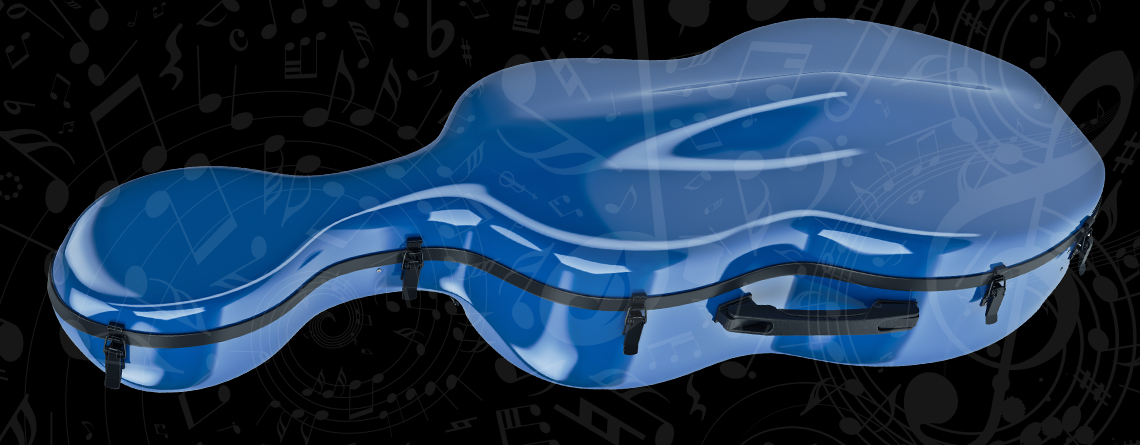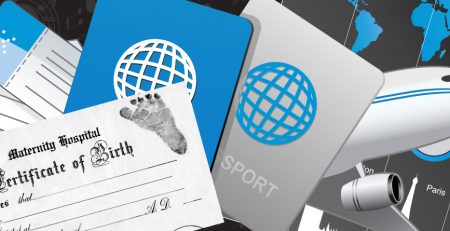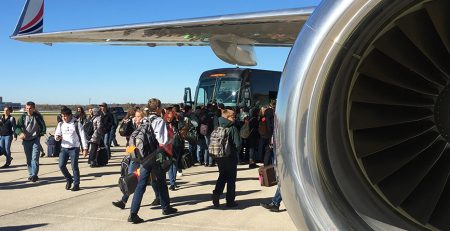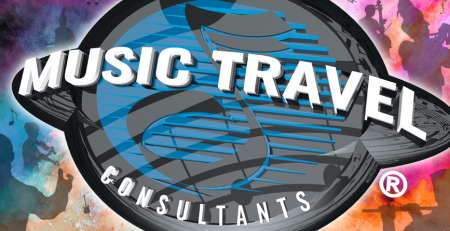Flying with Your Expensive Musical Instrument
Flying with Your Expensive Musical Instrument
Commercial air travel presents special challenges for the musician who flies. Many instruments are larger than typical carry-on bags, and some are irregularly shaped. Certain instruments are fragile or valuable — or both. Here’s some advice to help you have the best experience when flying with your expensive musical instrument.
Selecting Flights
Whenever possible, choose a nonstop flight, rather than a direct flight. If a non-stop is not available, pick a direct flight (has a stop or two, but you don’t change planes) rather than a flight with a connection. The direct flight – sometimes dubbed a ‘through flight’ – has only one flight number. Selecting your flights this way greatly reduces having your valuable instrument be mistakenly off-loaded at an intermediate stop, especially if it is in the aircraft’s luggage compartment. That also means luggage handlers won’t be repeatedly handling it. Plus, a direct flight eliminates the need to find a spot for your carry-on instrument, as you would have to do if you changed planes on the way to your destination. The only drawbacks? Non-stop flights often cost more than direct flights, and those with connections take a little bit longer due to en route stops.
If you book online, check flight listings closely. Some systems simply list the number of stops, but often stops actually involve connections. If two or more flight numbers are listed, each portion of the itinerary is a connection – – you’ll need to change planes on the way. Flying at off-peak times, like Tuesday through Thursday, or Saturday afternoon/evening, or Sunday morning, will be easier on your instrument, especially if you carry it into the aircraft’s passenger compartment. There are fewer passengers at those times, hence less competition for space in overhead bins. If you must fly on peak travel days, flights are often less crowded mid-day and late in the evening.
Choosing Airlines, Part 1
Before buying a ticket on an airline, read up on its checked baggage and carry-on baggage allowances and fees. These are usually listed on an airline’s web site under “Customer Service,” “Travel Information,” “Baggage” or “Optional Services.” You may also find them during your online flight-search process.
Baggage Allowances (“limit” per bag):
- Size (length + width + depth)
- Weight per piece or in aggregate
- Number of pieces
Both checked and carry-on luggage are subject to size and weight restrictions. Most involve fees, which vary between airlines. Read the fine print to be sure how many bags (both those carried-on and those checked underneath in the baggage compartments) at what weight and size, are allowed. Fees for over-size bags (sizes and weights) are listed in the fine print also. Baggage fees apply in both directions: you are charged on your outbound flight, and you pay again on your return flight. When you check-in for your originating flight, you pay that one-way fee (to your destination). If a ‘same day’ connecting flight is involved, you almost never have to pay a second baggage fee to send your baggage on the next leg of your journey. The same “single baggage fee” applies on your return flight, to your home. To avoid surprises on departure day, please pay close attention to your airline’s baggage policy, weight limits, and fees. If flying involves multiple airlines, check each carriers’ limits and fees, and then pack for the most restrictive. And, if your itinerary makes you change carriers en route to your destination, find out in advance if your baggage and instrument will be transferred (inter-lined) from one airline to the other. If not, you may have to pay a second baggage fee, or, worse, you may arrive at your destination without baggage or instrument!
Choosing Airlines, Part 2
Many U.S. destinations are served by regional carriers who partner with a larger U.S. airlines in a “code-share” arrangement. Code-share flights are listed under the identity of one airline but are operated by another. Flights operated by regional carriers use smaller aircraft. They usually have less carry-on bag space and a more limited carry-on bag allowance than flights operated directly by their major-carrier sponsors. Baggage compartments are correspondingly smaller, too. Code-share flights (and the actual airline flying them) are identified in online schedule listings. Travel Agents and On-line travel sellers are required to disclose to customers when/if a flight is operated by a carrier other than the one that is listed. Be alert to these disclosures, and investigate possible differences in carry-on space and allowances. If you read the airline’s baggage policy and are totally confused, call the airline. Independent online services, like www.seatguru.com, may help you spot aircraft too small to transport your instrument. Boarding the plane, the last thing you want to learn is that your priceless viola won’t fit in the overhead rack, and you now have to check it in a baggage compartment, filled with monster suitcases!
Carrying Your Instrument Into The Passenger Cabin.
Pay particular attention to the size and weight limits for carry-on baggage. If you bring your instrument into the cabin but it exceeds that airline’s carry-on baggage size or weight limits, the airline will either require it to be checked in the plane’s baggage compartment. OR, the airline will require you to buy a seat for your instrument, at full passenger fare, roundtrip. And your instrument must buckle its own seat belt. Either way, pack your instrument carefully as if it were to be transported in the aircraft’s baggage compartment. Certain carriers (so-called “ultra-low-cost airlines”) charge for each piece of carry-on baggage. Some carriers tend to charge more for carry-ons when you pay at the airport, instead of paying online when you make the reservation. Always check your airline’s website and your e-ticket itinerary/confirmation to be aware of any charges you might incur.
Ordering A Seat for Your Instrument
Many airlines allow you to purchase an adjoining seat for your instrument if its size exceeds the standard carry-on limit. This is usually known as “seat baggage,” or “cargo in the cabin.” For passenger safety, the law requires that instruments be securely strapped into seats. Often, your instrument will get a window seat. A crew member will assist you with approved restraints (usually seat belt extenders) to strap your instrument to its seat. A weight limit may still apply, and the shape of the instrument in its case must allow it to be strapped securely to the seat. Your seat, and/or your instrument’s seat, may be limited to certain cabin locations. Before you purchase your ticket(s), call the airline or check its website to find out if it offers this option.
Learn Your Airline’s Policies
Airline policies for musical instruments are listed in its ‘Contract of Carriage.’ U.S. DOT rules require these contracts be available on every airline’s website. Often they may be accessed via a link labeled “Legal” or “Customer Service Plan.” When you reach the contract portion of the airline website, do a word search for ‘music’.
What If Your Instrument Is Damaged?
Perish the thought! If your instrument is lost, damaged or delayed, there is a limit on the airline’s liability. It’s about $3,500 per passenger for domestic USA trips. International trip liability (including the domestic portion of the flight) is the equivalent of about U.S. $1,593. International liabilities are issued in an international currency surrogate, called, Special Drawing Rights (SDR’s). Because the SDRs ‘float’ with currency markets, their value changes daily. You may find today’s value at www.imf.org, right on its home page. Claims may be filed with your airline or with the U.S. Department of Transportation (DOT), for U.S. registered carriers only.
Can Airlines Avoid Liability for Damage to Instruments?
Domestically, the answer is ‘Yes’, some do. Internationally, including the domestic portion of the trip, airlines are usually prohibited by international treaty from disclaiming liability for damage to bags or instruments that they have physically moved, fly and carry. Passengers traveling with musical instruments with values greater than the limits listed above should ask the airline if it offers excess valuation coverage. For an additional fee, excess valuation coverage raises the airline’s damage limits. It never hurts to ask! Some airlines simply don’t offer excess valuation for musical instruments. A better alternative might be to take out a personal policy on your instrument to protect it in all conditions, not just when flying. Google ‘instrument insurance.’ Numerous companies pop up.
Preparing for Your Trip
- Pack your instrument in a hard case, so that it cannot move within the case. If your case does not have suspension cushioning shaped to the instrument, use bubble wrap or rolled-up clothing or sturdy foam all around the instrument to keep it motionless. Properly done, no small or large parts will break.
- Brass instrument bells are easily damaged. Do not pack a brass instrument in your checked suitcase. In its hard case, immobilize the bell in padding, as if it were the most fragile china. Pack so that it cannot move and so nothing can dislodge it within its case.
- Mark your case “Fragile” in several places, even though it is obviously an instrument case.
- Tag the case inside and out with your name, address, cell phone and e-mail address.
- If checking a string instrument into the plane’s baggage compartment, loosen the strings before packing it, per #1, above. Too-tight strings can harm a violin or viola or string bass. Temperature variations can cause expansion and contraction inside the case, causing strings to tighten to the point of breaking part of the instrument.
- If carrying your instrument into the aircraft cabin, check-in early with the carrier. Try to be at the departure gate early, so you have the best chance of boarding before over-head bin space is gone. It may pay you to purchase priority boarding if your airline offers it.
- Don’t forget to pack: Extra sticks/heads/strings/reeds/mouthpieces/music/appropriate performance clothing/shoes-sox and everything else you need to make a great performance!
- If, after all of the above, you need more information or want to file a complaint, visit: www.transportation.gov/airconsumer/air-travel-musical-instruments. This link also features information about Complaining to An Airline, Complaining to DOT, tips from Airlines For America (A4A), tips from Transportation Security Administration (TSA), the Department of Transportation (DOT) Final Rule on flying with Musical Instruments and Frequently Asked Questions (FAQs) about that rule.
This article has been paraphrased from the link, below, and information has been added to it:
https://www.transportation.gov/airconsumer/air-travel-musical-instruments
Happy and safe travels!












